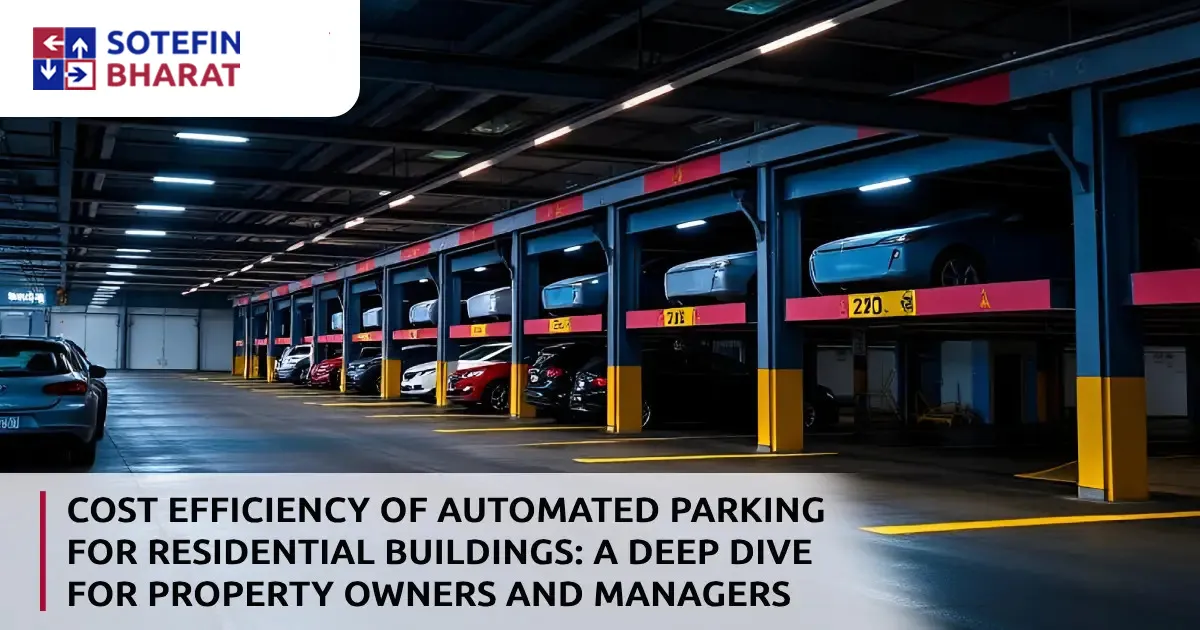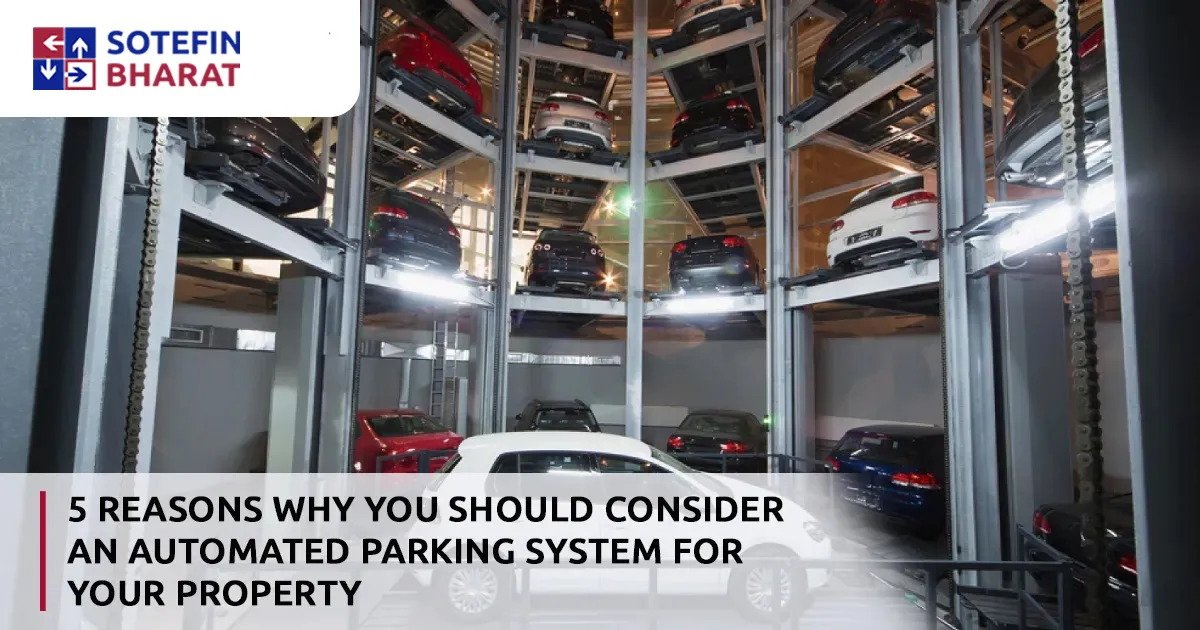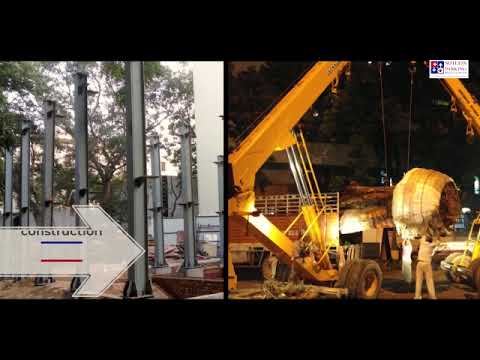
Automated parking systems (APS) are steadily gaining traction as a viable solution for maximizing parking capacity in space-constrained urban environments. For residential building owners and managers, the decision to invest in an APS is often weighed against its perceived cost.
This blog post aims to dissect the cost efficiency of automated parking, addressing the specific needs and concerns of residential properties. We’ll explore the initial investment, operational costs, long-term savings, and the overall return on investment (ROI) to help you make an informed decision.
Understanding the Costs: Initial Investment and Beyond
The initial cost of installing an automated parking system is undoubtedly a significant factor. It encompasses several components:
- System Hardware: This includes the mechanical and electronic components of the APS, such as lifts, shuttles, sensors, control systems, and safety features. The specific technology chosen (e.g., robotic, puzzle, tower) will influence this cost.
- Construction and Installation: This covers site preparation, foundation work, structural modifications, installation of the APS hardware, and integration with the building’s existing infrastructure. Factors like the complexity of the installation and local labor costs will play a role.
- Software and Control Systems: The software that manages the APS, including user interface, parking allocation algorithms, and security features, is a crucial component. Customization and integration with existing building management systems can impact the cost.
- Professional Fees: Architects, engineers, consultants, and project managers involved in the design, planning, and implementation of the APS will contribute to the initial investment.
- Permitting and Approvals: Obtaining necessary permits and approvals from local authorities can add to the upfront costs and project timeline.
Beyond the initial investment, it’s crucial to consider ongoing operational costs:
- Energy Consumption: While generally lower than conventional parking garages, APS still consume electricity for lifts, lighting, and control systems. Energy efficiency is a key factor to consider when choosing a system.
- Maintenance and Repairs: Regular maintenance, inspections, and occasional repairs are necessary to ensure the smooth and safe operation of the APS. A reputable service contract with a qualified provider is essential.
- Insurance: Adequate insurance coverage is necessary to protect against potential damage or liability related to the APS.
- Management and Staffing: Depending on the complexity of the system, some level of on-site management or staff training might be required. However, this is often less than for traditional parking.
Unveiling the Savings: Long-Term Benefits and ROI
While the initial investment in an APS can be substantial, the long-term cost benefits and potential ROI can be significant, especially for residential buildings:
- Increased Parking Capacity: APS can significantly increase parking capacity within the same footprint compared to conventional parking. This translates to more parking spaces available for residents, potentially increasing property value and rental income.
- Reduced Construction Costs: By optimizing space utilization, APS can potentially reduce the overall size and cost of the building’s parking structure. This can be particularly beneficial in new construction projects.
- Lower Operational Costs: Compared to traditional parking garages, APS often have lower operating costs due to reduced lighting, ventilation, and staffing requirements.
- Reduced Damage to Vehicles: Automated systems minimize the risk of dings, scratches, and other damages that can occur in tight parking spaces in conventional garages. This can lead to increased resident satisfaction and potentially lower insurance claims.
- Enhanced Security: APS offer improved security features, such as controlled access, surveillance systems, and reduced human interaction, which can deter theft and vandalism.
- Increased Property Value: The addition of a modern and efficient parking system can significantly enhance the perceived value of a residential property, making it more attractive to potential buyers or renters.
- Potential for Revenue Generation: In some cases, residential buildings might be able to generate revenue by offering parking spaces to non-residents, further enhancing the ROI of the APS.
Addressing Resident Concerns and Practical Considerations
Property owners and managers should also consider the following practical aspects and resident concerns:
- User Friendliness: The APS should be easy to use for residents, with clear instructions and intuitive interfaces. Training and support should be provided to ensure a smooth transition.
- Retrieval Time: The time it takes to retrieve a vehicle from the APS is a crucial factor. Residents expect quick and efficient retrieval, especially during peak hours.
- Reliability and Maintenance: The reliability of the system is paramount. Regular maintenance and prompt repairs are essential to minimize downtime and ensure resident satisfaction.
- Safety: The safety of both vehicles and residents is a top priority. The APS should be equipped with multiple safety features, including sensors, emergency stops, and backup systems.
- Aesthetics: The design of the APS should be aesthetically pleasing and integrate seamlessly with the overall architecture of the building.
About Sotefin Bharat Parking Limited
Sotefin, a global leader in automated car parking systems, has revolutionised parking technology since 1956—even before cars were a common sight in India. In 1959, they secured their first patent for a groundbreaking trolley system that enabled the automatic transfer of parked vehicles. Sotefin’s continued innovation and adaptability have allowed them to design and build parking solutions of any scale, from small systems to those accommodating thousands of vehicles.
Partner with us for India’s best automated parking technology. From initial consultation and design to installation and maintenance, we handle every aspect of your parking solution. Contact us today to discuss your needs.
Making the Decision: A Holistic Approach
The decision to invest in an automated parking system for a residential building requires a comprehensive cost-benefit analysis. Property owners and managers should carefully evaluate the initial investment, ongoing operational costs, and potential long-term savings. It’s also crucial to consider the specific needs and concerns of residents, as well as the overall impact on property value and marketability.
By taking a holistic approach and carefully weighing all the factors, residential building owners and managers can make an informed decision about whether automated parking is the right solution for their property. While the upfront cost can be a hurdle, the long-term benefits, including increased capacity, reduced operating costs, and enhanced property value, can make APS a worthwhile investment for the future of residential parking.









